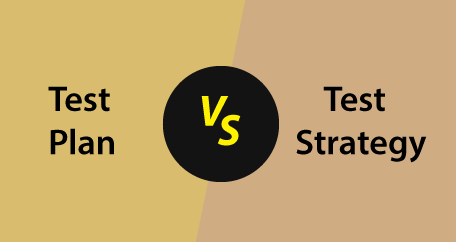In this section, we are going to discuss the major difference between the Test Plan and Test Strategies as we already know that both are an important part of Testing documentation.
As test engineers, we must be aware of these two testing terms as they play a major role in the Software Test Life Cycle (STLC). And for the interview purpose, it is the most commonly asked question.
But before we get into the difference between Test Plan and Test Strategy first, we will understand the concepts of Test Plan and Test Strategy in brief.
What is Test Plan?
The test plan is a base of software testing. It is a detailed document, which includes several testing attributes such as test objectives, scope, test schedule, template, required resources (human resources, software, and hardware), test estimation and test deliverables, risk, mitigation plan, defect tracking, entry and exit criteria, test environment, etc., which defines software testing areas and activities.
The test plans play a major role in testing and help us deliver a quality product.
What is a Test Strategy?
The test strategy is a high-level document used to validate the test levels to be executed for the product. And it also describes what kind of technique has to be used and which module will be tested.
It contains various components like documentation formats, objectives, test processes, scope, customer communication strategy, etc.
The Test Strategy's main purpose is to deliver a systematic approach to the software testing process to ensure reliability, quality, traceability, and better planning.
Difference between Test Plan and Test Strategy
In the below table, we have listed some of the important difference between Test Plan and Test Strategy:

|
S.NO |
Test Plan |
Test Strategy |
|
1. |
It is a formal
document used to define the scope of testing and different testing
activities. |
It is a high-level
document that involves planning for all the testing activities and delivering
a quality product. |
|
2. |
It is derived with
the help of Use Case documents, SRS (Software Requirement Specification), and
Product Description. |
While the Test
Strategy can be derived with the help of the BRS (Business Requirement
Specification) document. |
|
3. |
A test plan is
developed by Test Lead or test/ Project manager. |
Generally, the test
strategy is developed by the Business Analyst and approved by the Project
Manager. |
|
4. |
A Test Plan is a
dynamic document that can be updated frequently when new requirements or
modifications have occurred. |
It is a static
document, which implies that it cannot be changed or modified. |
|
5. |
A test plan defines
the whole testing activities thoroughly. |
The test strategy
defines high-level test design methods. |
|
6. |
A test plan is
specified at the project level. |
A test strategy is
specified at the organization level, which can be used by multiple projects. |
|
7. |
The important
testing attributes included in the test plan are as follows:
|
The significant
testing components include in the test strategy are as follows:
|
Conclusion
Fundamentally, in a Test plan, all the names of
the test engineers and test cycle numbers have been mentioned who tested a
particular script. Therefore, if some feature fails in the particular cycle, we
can easily refer to the previous cycle to check if that specified module was
passed or failed.
Test strategy can't frequently change as it sets some
standards for the test plan. And it becomes difficult to stick to a precise
plan and modified strategy because if the requirement changes happen
repeatedly, it will affect the quality of the testing, and we may not be able
to deliver a quality product.
To get the complete information on the test plan and
test strategy documents, check our tutorials on Testing documentation
and Test Plan.



0 Comments